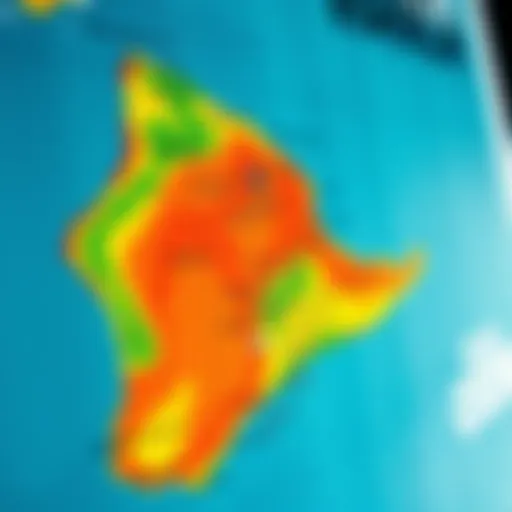Discover Kiteboarding Culture and Adventure in the Caribbean


Intro
Kiteboarding in the Caribbean is not just a sport; it's a cultural phenomenon steeped in tradition and adventure. As the sun dips below the horizon and paints the sky with hues of orange and pink, kiteboarders carve through the azure waters, harnessing the power of the wind. In this article, we explore the intricate layers of this exhilarating activity—from its cultural roots to the essential techniques that define the sport.
Across various Caribbean islands, each region boasts its unique flair and techniques, shaped by the local environment and cultural practices. The thrill of kiteboarding attracts enthusiasts, beginners, and experts alike, all eager to ride the waves while soaking in the vibrant atmosphere. Not just leaving us with an adrenaline rush, kiteboarding fosters a strong sense of community through local events and competitions, uniting individuals in their shared passion.
Join us as we navigate through the essentials of gear, delve into advanced techniques, and surf the local kiteboarding culture that thrives in the Caribbean. Whether you are an experienced kiteboarder or a curious traveler looking for a new adventure, there is something here for everyone to learn and enjoy.
The Significance of Kiteboarding in Caribbean Culture
Kiteboarding, with its vibrant colors and exhilarating energy, is more than just a sport in the Caribbean; it reflects the region's rich cultural mosaic. There’s a certain rhythm to how the wind whips the ocean’s surface, and this has become a rhythmic expression of local identity. Understanding the significance of kiteboarding digs deep into various elements, offering insights into historical legacies, community bonding, and artistic expressions.
Historical Background of Kiteboarding
The roots of kiteboarding can be traced back to the late 20th century. However, like a traditional fabric woven over time, the practice incorporates influences from various regions. Notably, kite surfing emerged from the fusion of different wind sports, which found a home among the Caribbean’s azure waters and favorable climates. This historical evolution is akin to tracing a family tree, revealing connections to awakened passions for freedom and adventure. The Caribbean islands have become playgrounds for this exhilarating activity, where indigenous practices and modern techniques intermingle.
Cultural Influences on Kiteboarding
The cultural influences surrounding kiteboarding are numerous. Local communities embrace and nurture this sport by intertwining it with traditional practices and beliefs. For instance, some communities use kiteboarding as a means to engage youth in constructive ways, away from potential social drawbacks. The sport has become a bonding activity, fostering camaraderie among participants. Sharing techniques, tips, or even just stories from their kiteboarding adventures cultivates a sense of belonging.
Kiteboarding also gets painted with the strokes of Caribbean flavors; lively music, vibrant festivals, and dances accompanied by a spectacular display of kites reflect both the creativity and aspirations of people in the islands. It's not uncommon for a sunset session to transform into an impromptu celebration along the shores, showcasing the joyous spirit of the islands.
Art and Festivals Celebrating Kiteboarding
Art and festivals encapsulating kiteboarding showcase the sport's impact beyond just the water. Throughout the Caribbean, numerous festivals are dedicated to kiteboarding, bringing together locals and tourists alike. Events like the St. Thomas International Regatta or the Aruba Kite Festival do more than just welcome participants to show off their skills; they create platforms for cultural exchange and celebration. Artists capture the thrill and fluidity of the sport through paintings, photography, and multimedia installations.
Community gatherings often feature live bands, Caribbean cuisine, and displays of artistry that reflect the freshness of ocean breezes. These celebrations unite diverse backgrounds under a shared passion for adventure, fostering unity and promoting the importance of preserving both the sport and its environment.
"Kiteboarding is more than just the action of flying on water; it’s a journey of connection, creativity, and culture, steeped in the essence of the Caribbean."
In summary, the significance of kiteboarding in Caribbean culture is pronounced and multifaceted. Its historical roots, cultural influences, and the vibrant artistry surrounding it weave together a rich fabric that celebrates life on the islands while retaining a sense of community and identity. Through kiteboarding, participants not only pursue a thrilling experience but also part-take in an ongoing cultural narrative that continues to unfold with each gust of wind.
Diverse Kiteboarding Techniques in the Caribbean
Kiteboarding in the Caribbean isn't just a thrilling sport; it is a rich tapestry woven from various techniques that cater to different skill levels and environmental conditions. Understanding diverse kiteboarding techniques enriches the experience for both novices and seasoned kitesurfers. The Caribbean, with its consistent winds and stunning landscapes, offers multiple styles of riding that showcase skill, strategy, and creativity.
Freestyle Kiteboarding Techniques
Freestyle kiteboarding is perhaps the most captivating form, showcasing an array of tricks that fly high on the innovative spirit of the rider. Here, the emphasis is placed on jumps, spins, and flips, often executed just above the water's surface.
To get started, a solid grasp of basic skills is essential. Riders begin with fundamental maneuvers such as the "pop"—a technique to gain height during jumps. Remember this:
"A successful pop relies on timing and control; it’s not just about the strength."
Once comfortable, riders can progress to more complex tricks. Consider different aspects:
- Handle Passes: Mastering passing the handle of the kite bar behind your back while airborne adds flair.
- Shuvits and Spins: A rotational trick that combines various spins while keeping the board stable.
- Double Backflips: Requires not only skill but also a good dose of courage.
This technique's appeal in the Caribbean lies in venues like Cabarete in the Dominican Republic and the flat waters of The Bahamas, where riders can perfect these audacious moves under the brilliant sun.
Wave Riding Essentials
Transitioning from freestyle, wave riding takes kiteboarding to another level. It brings spontaneity as riders glide over swells, reading the ocean's rhythm. Here, strategy is paramount; a different type of finesse is needed.
Key essentials for wave riding include:
- Board Choice: A smaller, more maneuverable board allows for greater control in waves. Some riders prefer surfboards tailored for kiteboarding.
- Timing and Positioning: Finding the right place on the wave is crucial to catching the momentum and executing a ride that feels like dancing with the sea.
- Turn Techniques: Practicing sharp turns is vital. The wave responds instinctively as the rider guides it—once you hone this, the experience is transcendent.
Famous spots like Puerto Rico’s Jobos Beach and the waves surrounding the island of Aruba provide a ripe backdrop for wave-riding enthusiasts, offering challenges that suit both beginners and experts.


Course Racing Strategies
Course racing brings a competitive edge to the kiteboarding scene. Participants aim to navigate between markers and reach the finish line quickly. Unlike freestyle, the focus here is on speed, skill in tacking, and strategic maneuvers.
Fundamentals of course racing include:
- Sail Control: Mastery of the kite is essential, maintaining optimal power while navigating choppy waters.
- Angles and Points: Understanding the various angles of sail and board against the wind improves efficiency and speed.
- Navigational Skills: Knowing how to effectively read weather and water conditions helps in making quick decisions.
The thrill of racing can be felt in places like St. Martin and the annual Caribbean Kite Circuit, where adrenaline meets competition, making it a must-experience for aspiring racers.
In sum, embracing diverse kiteboarding techniques in the Caribbean not only fine-tunes performance but also offers unique experiences on the water. The journey from freestyle tricks to mastering waves and excelling in race courses paints an exhilarating picture of the vibrant kiteboarding culture in this stunning region.
Understanding Environmental Factors
When it comes to kiteboarding in the Caribbean, understanding environmental factors like wind, tide, and location is paramount. These elements don’t just affect the ride; they can make or break one’s experience on the water. For enthusiasts and instructors alike, grasping these components is essential for both safety and enjoyment. In essence, it's about reading the natural signals and responding appropriately to create thrilling moments while minimizing risk.
Wind Conditions for Optimal Kiteboarding
Wind is the lifeblood of kiteboarding. Every kiteboarder knows that without suitable wind, the sport becomes a cumbersome exercise in frustration. The Caribbean is blessed with steady trade winds, particularly during the winter months, creating a near-ideal kiting environment.
- Strength and Direction: The strength of the wind can dictate everything from which size kite to use to the level of control one can maintain while riding. A consistent wind ranging from 15 to 25 knots is considered perfect. Additionally, the direction of wind impacts the angles from which one approaches waves and the launch spots available.
- Wind Patterns: Understanding the local wind patterns is necessary. Some bays or coastlines may have unexpected gusts or lulls due to geographical features. For example, mangroves can disrupt the wind flow, making it essential to scout a location well before taking flight.
"Wind conditions in the Caribbean can change faster than a cat on a hot tin roof. Always check local reports before heading out!"
Tide and Wave Effects
Tides and waves can radically transform a kiteboarding experience. Tidal movements can change the water depth and current conditions dramatically, influencing both safety and performance. Here are key considerations:
- Understanding Tide Cycles: Knowing when the tide is high or low helps kitesurfers avoid potential trouble areas such as rocky shallows or strong currents that can pull one away from the safety of the shore. Sometimes, the optimal spots for kiteboarding are only ideal during specific phases of the tide.
- Wave Dynamics: Waves can be friend or foe in kiteboarding. For those aiming to master wave-riding techniques, favorable conditions with well-formed waves offer a playground. Conversely, choppy waters can lead to a bumpy ride. One should always be mindful of shifting tides and how they interact with wind patterns for maximum control.
Choosing the Right Spot
Location, location, location! This age-old mantra rings especially true for kiteboarders. Not all beaches are created equal, and several factors come into play when determining where to launch into the water.
- Accessibility and Amenities: Some popular kiteboarding spots in the Caribbean, like Cabarete in the Dominican Republic, provide ample amenities such as rental services and lessons. Other locations may be pristine but lack the necessary facilities, which could lead to logistical challenges.
- Local Regulations: Identifying areas with restrictions on kiteboarding is essential. Some popular beaches may have designated zones, while others may be off-limits altogether to protect wildlife or local communities.
- Community Vibe: Ultimately, the kiteboarding community can play a significant role in the experience. Some areas are known for fostering a fun, water-loving crowd, which can contribute to the overall enjoyment of the sport.
Keeping these environmental factors in mind ensures that every kiteboarding session is as exhilarating as the last, making the most out of the Caribbean's beautiful waters.
Essential Equipment for Caribbean Kiteboarding
When one thinks of kiteboarding in the Caribbean, the colorful kites soaring over turquoise waters are often the first image that comes to mind. Yet, the vibrant spectacle above the waves is just one side of the coin. The choice of essential equipment plays a crucial role in shaping the experience of every kiteboarder, from beginners to seasoned pros. The right gear not only ensures safety but also maximizes performance on the water, enabling adventurers to harness the wind with skill and agility.
Types of Kites and Their Uses
Selecting the correct kite is paramount, as each type serves a specific purpose depending on conditions and riding style. Generally, the two predominant kite types are C-kites and bow kites. Each has its distinct advantages.
- C-kites: Great for freestyle riding, these kites offer unmatched performance when it comes to jumping and tricks. Thanks to their shape and design, they provide precise control, which is favored by many athletes competing in high-stakes contests.
- Bow kites: These kites feature a wider span and are known for their excellent low-end power, making them ideal for beginners. They are easier to launch and land, and they stay stable even in gusty conditions. This can be a real lifesaver when one finds themselves in unpredictable Caribbean winds.
In addition to these, you’ll find delta kites and hybrid kites that cater to specific needs. Each kind has its sweet spot, so understanding how they perform in various conditions can elevate your riding experience tremendously.
Harness Selection and Importance
Choosing the right harness is akin to finding the perfect pair of shoes. It needs to fit just right. Harnesses come in two main styles: sit harnesses and waist harnesses.
- Sit harnesses: These are typically favored by those who enjoy long sessions and prefer a lower center of gravity. They provide fantastic back support, which is great for long kiteboarding hours.
- Waist harnesses: These allow for greater movement and mobility, making them a favorite among surfers and those aiming to execute advanced maneuvers.
It’s also essential to consider materials and padding. A good harness should feel like a second skin: snug but not restrictive. An improperly fitted harness can lead to significant discomfort and loss of focus—two things you definitely want to avoid when you're dodging waves.
Board Varieties for Advantageous Riding
Board selection is a pivotal decision that can shape the outcome of each session. The right board can drastically affect performance in terms of speed, control, and ease of use. Generally, you will encounter three types of boards: directional boards, twin-tip boards, and foil boards.
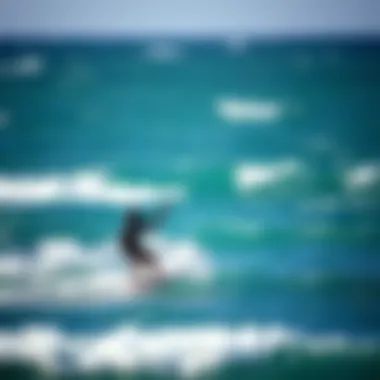
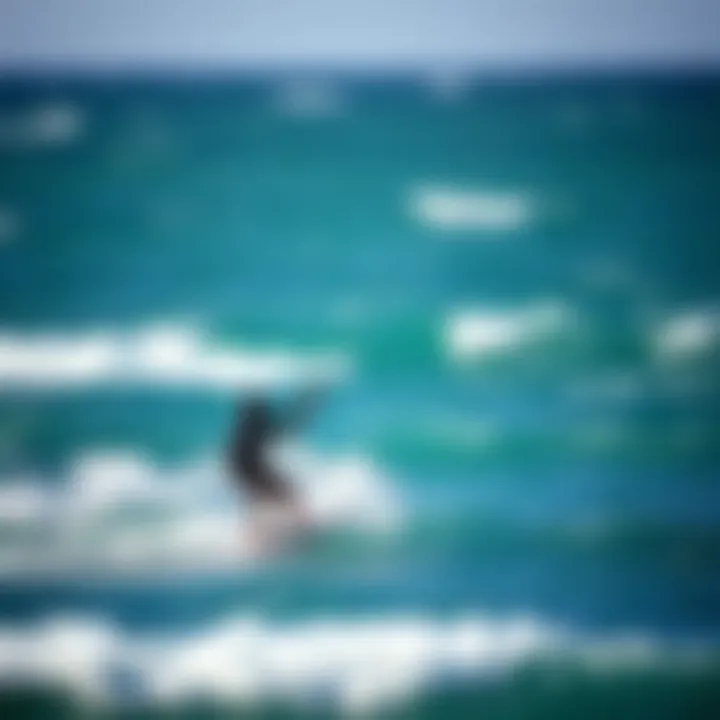
- Twin-tip boards: This is the most popular choice among kiteboarders and works well for various riding styles, from casual crusing to aggressive tricks. They are symmetrical, making it easy for the rider to switch directions without needing to change the board's position.
- Directional boards: These are tailored for wave riding and surf conditions and provide superior upwind capability. They resemble surfboards and can allow for tighter turns, enhancing the experience in the Caribbean’s rolling swells.
- Foil boards: A newer variant that glides above the water rather than on it. This technology is gaining traction among advanced riders who want to experience the sensation of flying above the surface.
When choosing a board, factors such as weight, riding style, local conditions, and personal preference come into play. Each type holds its own secrets and benefits, which can profoundly influence your adventure on the water.
In summary, the equipment you select not only reflects your preferences but also directly impacts your kiteboarding experience in the Caribbean. A well-rounded understanding of your gear will equip you to navigate the azure waters effectively, remaining safe while maximizing the thrill that kiteboarding promises.
"Investing in quality equipment is like putting money into the bank. It pays dividends in performance and safety."
For more detailed information on different kiteboards and gear, you might find these resources useful: Wikipedia, Britannica.
Whether you’re a seasoned kiteboarder or just starting, knowing your equipment is the key to making the most of your time in the beautiful waters of the Caribbean.
Teaching and Learning Kiteboarding
Kiteboarding is more than just a thrilling sport; it's a blend of culture, art, and skill that offers novice and seasoned riders a unique bond with nature. Understanding the dynamics of teaching and learning this exciting sport is paramount for both instructors and students. It fosters confidence, enhances safety, and cultivates a community that thrives on shared passions.
Instructional Methods for Beginners
When teaching beginners, the emphasis should be on foundational skills while fostering a safe learning environment. The following methods are essential:
- One-on-One Instruction: Many learners benefit from personalized instruction. This allows the instructor to tailor the lessons to the individual’s pace and learning style. It’s effective because the instructor can provide immediate feedback and adapt strategies according to the student’s strengths and weaknesses.
- Progressive Teaching Techniques: Starting with simple concepts like kite control on land before transitioning to water can help students build confidence and understanding.
- Use of Visual Aids: Demonstrating techniques through video or live demonstration can enhance comprehension. Visual breakdowns of maneuvers provide learners with a reference point.
"Teaching is not just about imparting knowledge; it’s about igniting a passion and the love for the wind and sea."
Advanced Techniques and Coaching
For those progressing beyond the basics, advanced techniques demand nuanced coaching. The approach should focus on:
- In-Depth Skill Analysis: Riders can greatly benefit from analyzing their techniques, like aerial tricks or transitions. Use video analysis for critical feedback and to identify areas for improvement.
- Peer Review Systems: Encouraging students to work in pairs can create a supportive atmosphere where they share insights and critique each other’s performances in a constructive manner.
- Masterclasses and Clinics: Hosting sessions with experienced riders helps in exposing students to various styles and innovative techniques. These events create an immersive learning environment, fostering growth.
Safety Considerations in Training
Safety is paramount in kiteboarding training. Recognizing and understanding potential hazards enhances not only the individual’s experience, but the collective atmosphere of kiteboarding communities.
- Pre-Flight Safety Checks: Always ensure equipment is in optimal condition before starting a session. Checking lines, kites, and harnesses for wear and tear is vital.
- Understanding Environmental Risks: Educating learners about local conditions—such as tides, wind patterns, and potential obstacles—ensures they can make informed decisions while on the water.
- Personal Floatation Devices (PFD): Regardless of skill level, the use of safety gear such as PFDs should be strictly enforced. Instructors ought to be models of safety to instill these values in their students.
In summary, teaching and learning kiteboarding encompasses a diverse range of instructional methods that can promote skill development, safety awareness, and community bonding. Both instructors and learners must navigate the waters of this sport with respect while continually seeking improvement and connection to the vibrant culture surrounding kiteboarding in the Caribbean.
Travel Destinations for Kiteboarding in the Caribbean
Kiteboarding in the Caribbean is not just a sport; it’s an experience deeply embedded in the local culture and lifestyle. The right travel destination can significantly enhance that experience, providing not only great conditions for kiting but also a vibrant atmosphere that complements the thrill of this water sport. Choosing the right place involves a mixture of understanding the local climate, the quality of kiting spots, and the availability of accommodations that cater to the needs of kitesurfers.
Well-known islands like Barbados and the Dominican Republic come to mind first, but venturing off the beaten path often reveals hidden gems that can provide the perfect backdrop for kiteboarding adventures. In this section, we will explore some of the top kiteboarding locations in the Caribbean, the climate and conditions you can expect by island, and the accommodations and amenities available to make your stay as enjoyable as possible.
Top Kiteboarding Locations
The Caribbean is dotted with spots that promise not only good winds but also breathtaking scenery. Here are some standout locations:
- Kite Beach, Cabarete, Dominican Republic: Often referred to as the kiteboarding mecca of the Caribbean, Kite Beach boasts consistent winds and warm waters, with a lively kiting community.
- Barbados: Notable for its flat waters and wave spots, Barbados offers places like Silver Sands and Long Beach that cater to different levels of kiteboarders.
- Tobago: The spot at Back Bay in Tobago is slowly gaining recognition. With its picturesque setting, you can enjoy kiting while soaking in a serene environment far away from busy resorts.
- La Ventana, Mexico (bordering the Caribbean): While not an island, its proximity offers lovely conditions and vibrant local culture, perfect for those willing to travel just a bit further.
These sites not only enhance the excitement of kiteboarding but also provide an opportunity to immerse oneself in local customs and traditions.
Climate and Conditions by Island
Understanding the climate conditions is essential before heading out, as it greatly influences not just your kiting experience but also your overall trip. While each island has its own characteristics, certain trends prevail that cater to kiteboarding enthusiasts:
- Dominican Republic: The wind season typically lasts from November to April, with trade winds ranging between 15 to 25 knots. These conditions make for ideal kiting weather.
- Barbados: This island also enjoys favorable winds, mostly from December to April, with an average of around 20 knots. The Atlantic side provides waves, while the leeward coast has flatter waters, fitting a range of kiting styles.
- Tobago: The best winds usually occur from December through April, though they can be less consistent than in other regions. Expect winds shifting around 12 to 20 knots.
These climate considerations can help kiteboarders make the most of their trip, ensuring they visit at the right time to catch optimal conditions.
Accommodations and Local Amenities
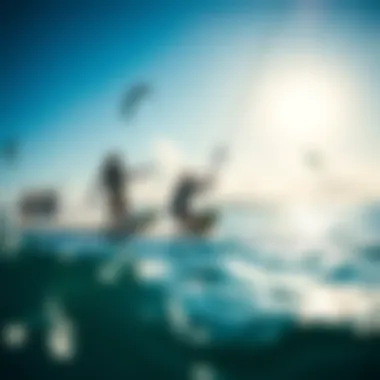
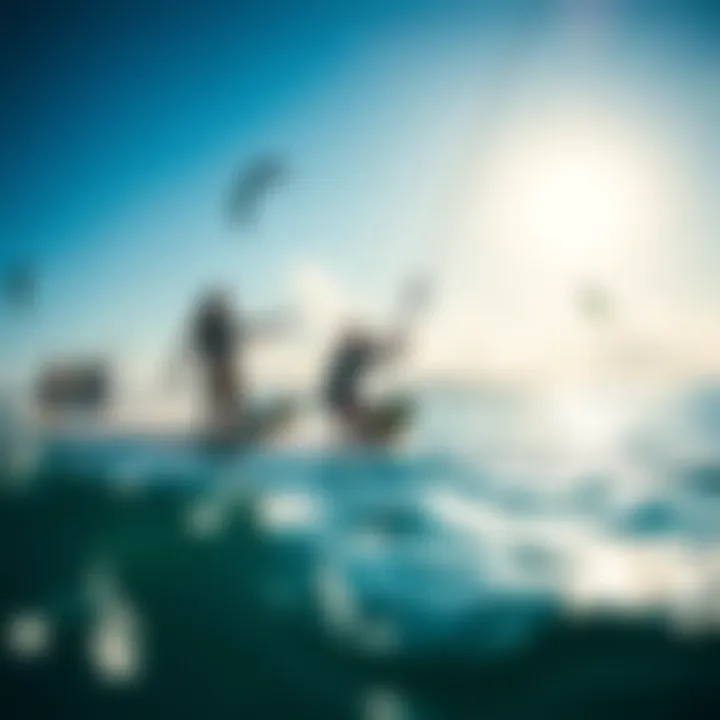
Finding the right place to stay can make or break a kiteboarding trip. Fortunately, many Caribbean locations offer accommodations tailored for kitesurfers:
- Kiteboarding Camps: Many popular spots have special camps. For example, in Cabarete, you’ll find several kite camps which offer coaching, rental equipment, and local guides to help you navigate the waters.
- Hotels and Resorts: Look for those that offer amenities like storage for your equipment, kite repairs, and even shuttle services to the best kiteboarding locations. Places in Barbados usually provide such facilities.
- Local Amenities: Apart from lodging, essential amenities include shops for equipment rental, repairs, and groceries for those who like to cook. Many local kiteboarding schools also host events, giving travelers a chance to connect with others in the kiteboarding community.
Having these accommodations and amenities around makes the experience hassle-free, allowing you to focus on what you love most – kiteboarding.
Exploring the Caribbean’s kiteboarding scene not only elevates your skills but also immerses you in a rich cultural tapestry, making every ride more than just a sport.
Experiencing Local Kiteboarding Events
Kiteboarding isn't just a solo activity; it's a vibrant tapestry of community spirit, culture, and shared experiences, especially in the Caribbean. Engaging in local kiteboarding events enriches the experience of both seasoned riders and newcomers alike. These gatherings play a pivotal role, fostering a sense of belonging and promoting the sport to a wider audience. With the ocean as a backdrop, the adrenaline, camaraderie, and excitement blend to create moments that are often unforgettable.
Major Competitions and Festivals
One cannot speak of local kiteboarding events without mentioning the thrilling competitions and colorful festivals that bring together kiteboarders from all corners of the Caribbean and beyond. Events like the Caribbean Kiteboarding Championship held annually in Bonaire, and the Kite Jam in the Dominican Republic attract both participants and spectators alike. These gatherings showcase not just skill, but the passion embedded in the culture of kiteboarding.
Competing in these festivals provides riders with a platform to demonstrate their tricks and techniques. Participants often gain recognition, which can lead to sponsorship opportunities and professional careers. Plus, for fans, these events offer a stunning visual feast of color and movement as kites fill the sky.
"There’s nothing like watching the best kiteboarders in action, feeling the wind whip around you, and hearing the cheers of the crowd!"
Beyond the competition, these festivals sometimes bring in local artists, food vendors, and musicians, creating a festive atmosphere that celebrates Caribbean culture while also promoting the sport.
Community Events and Gatherings
Local community events also play a crucial role in solidifying the community around kiteboarding. Workshops, cleanup days on the beach, or informal gatherings are more frequent than one might think. For instance, many local kiteboarding schools organize meet-ups to share tips on techniques or maintenance of gear. These events not only enhance skills but also build lasting friendships.
Such gatherings often include:
- Skill-sharing workshops: Where newbies get advice from experienced riders.
- Picnics or barbecues: Casual settings for socializing and unwinding.
- Beach cleanups: Promoting environmental stewardship while kiteboarding.
By engaging in these community events, participants can strengthen their connections and nurture a culture of support and encouragement. These bonds can lead to lifelong friendships that extend beyond the water.
Networking Opportunities Among Practitioners
Local kiteboarding events also serve as fertile ground for networking among practitioners. Whether you’re a beginner or an advanced rider, connecting with others can open doors to new opportunities—be it finding coaching, discovering new spots to ride, or teaming up for shared adventures.
Many competitions include segments for both emerging talents and seasoned veterans, fostering an inviting atmosphere for collaboration. Some riders even network to organize trips to remote islands or lesser-known spots that boast perfect kiting conditions.
In addition, social media platforms such as Facebook or Reddit serve as tools for riders to communicate, share experiences, and even arrange meet-ups. Engaging with fellow kiteboarders online can sometimes lead to in-person collaborations during events.
By keeping these connections active, many kiteboarders find mentorship, guidance, and inspiration from those with more experience. Networking can significantly enhance one’s kiteboarding journey, as shared knowledge translates to improved skills and unforgettable adventures.
The Future of Kiteboarding in the Caribbean
The landscape of kiteboarding in the Caribbean is on the verge of a profound transformation. With advancements in technology and increasing awareness of environmental concerns, the future presents both challenges and opportunities for this exhilarating sport. The evolution of kiteboarding is not just about high-flying tricks and adrenaline; it intertwines deeply with the cultural essence of the Caribbean islands and their communities. An exploration of emerging trends, sustainability practices, and advocacy sheds light on how the sport can thrive without compromising the natural beauty of the region.
Emerging Trends and Innovations
One cannot ignore the rapid innovation occurring within the kiteboarding community. Manufacturers are continuously pushing the envelope, creating new kites that are lighter, more durable, and easier to control. For instance, the shift towards eco-friendly materials makes waves, quite literally, in both design and production. Brands like Duotone and Slingshot are introducing kites made from recycled materials, demonstrating a commitment to sustainable practices without sacrificing performance.
Another significant trend involves the rise of foiling. This technique, which hovers above the water's surface, allows riders to experience a different form of kiteboarding. Foiling is becoming popular in places like Aruba and the Dominican Republic, providing a unique experience on flatter waters. Innovation has also sparked a surge in electric-powered foilboards, offering less downtime when the wind is low.
These advancements bolster the sport's accessibility, inviting newcomers to partake in life-changing experiences, and nurturing a more diverse kiteboarding community.
Environmental Sustainability and Impact
Sustainability plays a pivotal role in the future of kiteboarding in the Caribbean. As the effects of climate change loom, it's imperative for kiteboarders and businesses to consider their ecological footprint. The pristine beaches and vibrant marine ecosystems are not just picturesque; they are the very essence of kiteboarding in this region. Thus, implementing responsible practices is crucial.
"Preserving our playgrounds is not just a responsibility but a necessity for future generations of riders."
Initiatives like beach clean-ups and partnerships with local environmental organizations are gaining momentum. Kiteboarding schools, such as those in Barbados and Saint Martin, are leading the charge, educating participants on the importance of protecting coastal areas and marine life while enjoying the thrill of kiteboarding. Workshops and events often pair with local conservation efforts, creating a symbiotic relationship between the sport and its environment.
Advocacy for Conservation in Kiting Areas
The importance of advocacy cannot be overstated when discussing the future of kiteboarding in the Caribbean. Local communities are becoming increasingly aware of the need to protect their natural resources. Kiteboarding practitioners, both locals and tourists, are banding together to advocate for policies that safeguard kiting areas from overdevelopment and pollution.
Creating protected zones for kiteboarding ensures that both the sport and environment thrive. Organizations like the Caribbean Kiteboarding Association are playing a critical role in lobbying for environmental policies. By collaborating with governmental bodies, they aim to implement regulations that preserve essential habitats, improve water quality, and maintain the quality of local beaches.











